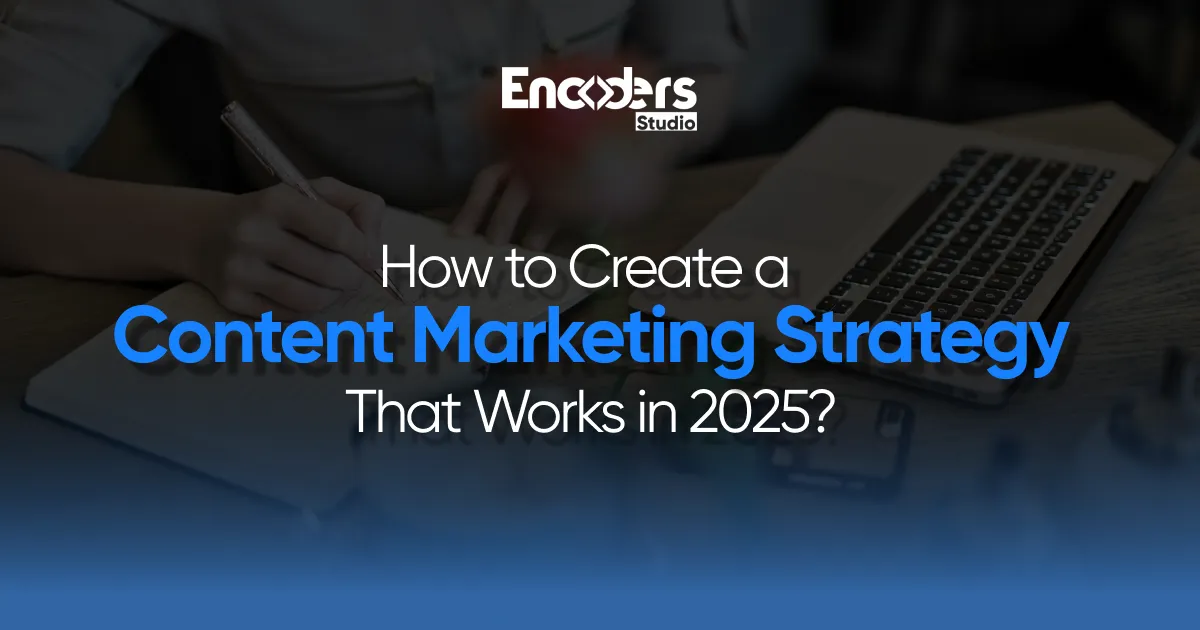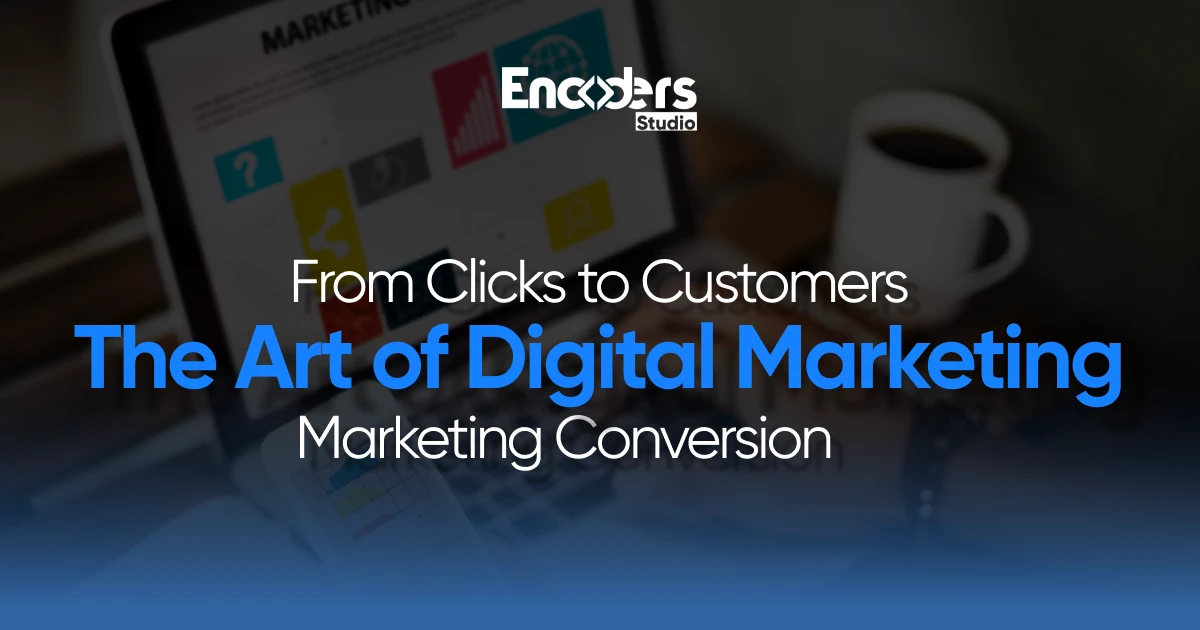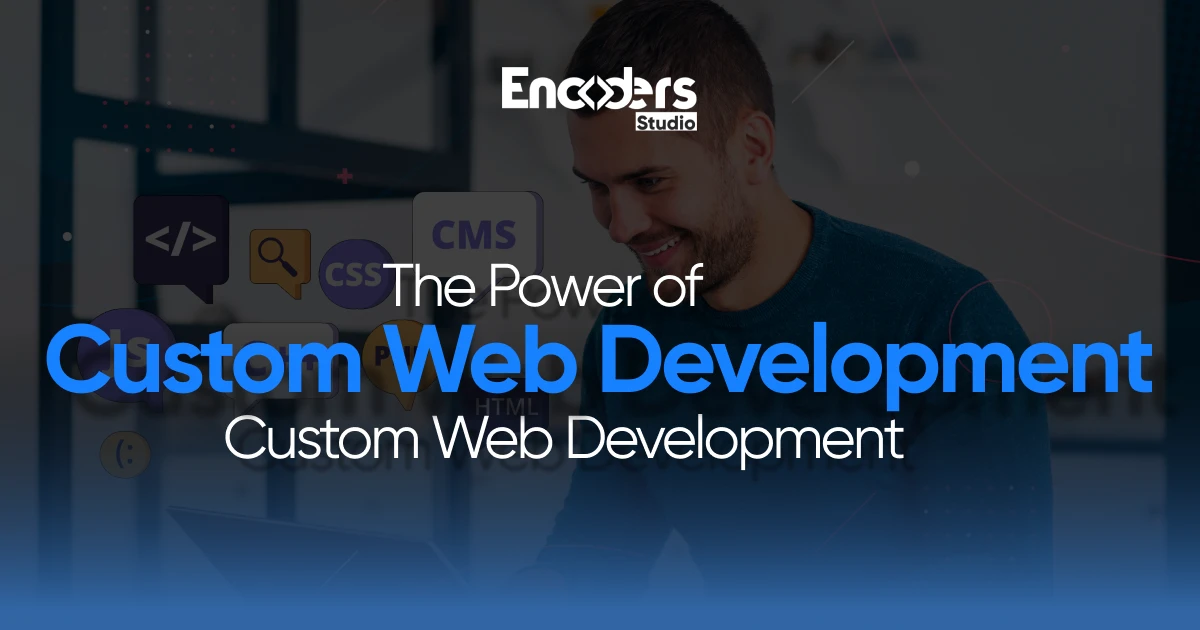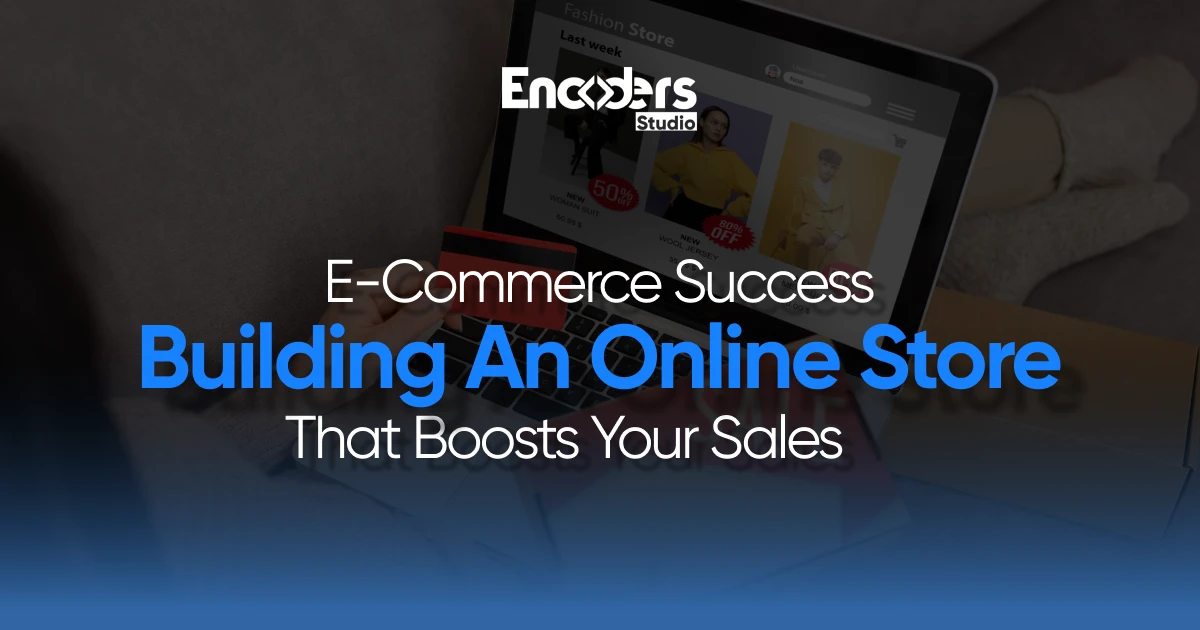[TL;DR]
Creating a winning content marketing strategy in 2025 requires AI integration, strategic funnel mapping, and data-driven optimization for measurable business results.
- Define clear objectives and build AI-powered audience personas using social listening and behavioral data.
- Map content to funnel stages (TOFU, MOFU, BOFU), ensuring prospects receive the right message at the perfect time
- Leverage modern SEO and AEO to optimize for voice search, featured snippets, and AI-powered answer engines.
- Use AI automation for content creation, personalization, and performance optimization while maintaining human creativity.
- Measure real business outcomes through revenue attribution, lead quality, and customer lifetime value rather than vanity metrics.
This guide provides a complete framework for building content strategies that adapt to changing algorithms while driving consistent growth.
Most businesses create content like they’re throwing darts blindfolded. They publish blog posts, share social media updates, and hope something magically generates leads. Meanwhile, smart companies are using AI-powered strategies and scientific funnel approaches to turn every piece of content into a revenue-generating asset.
Content marketing has fundamentally changed in 2025, with 82% of marketers actively investing in it as a core growth strategy. AI algorithms determine what gets seen, and customers demand personalized experiences throughout their journey. The businesses dominating their markets now treat content creation as a strategic revenue function with clear objectives and trackable outcomes.
Struggling with content that brings traffic but zero customers? Encoders Studio creates content strategies that convert visitors into revenue using AI optimization and proven funnel tactics.
Step 1: Define Business Goals and Identify Audience
Set Clear, Measurable Objectives
Content marketing objectives must align with specific business outcomes and measurable KPIs rather than vanity metrics like page views or social media followers. The most successful content strategies directly connect to revenue generation, lead quality improvements, and customer lifetime value increases.
In the B2C sector specifically, 31% of marketers now allocate at least half of their total budget to content marketing, showing its importance in consumer-focused strategies.
Think beyond surface-level metrics. Instead of celebrating 10,000 blog views, focus on whether those views generated qualified leads who eventually became customers. Modern content objectives include:
- Lead generation targets with specific quality thresholds and conversion benchmarks
- Brand awareness metrics measured through share of voice and mention sentiment analysis
- Customer retention programs using educational content to reduce churn rates
- Search visibility goals targeting high-intent keywords that drive commercial outcomes
- Thought leadership positioning within industry conversations and media coverage
Build Detailed Audience Personas
Gone are the days of guessing what your audience wants. AI-powered social listening and data analytics enable marketers to create nuanced personas based on actual digital behaviors rather than demographic assumptions. Over 37% of marketing teams have embraced AI as a core part of their strategy, using machine learning to understand real customer interactions.
Your persona development should dig deeper than age and location. Modern personas capture the emotional triggers, content preferences, and decision-making patterns that influence purchase behavior.
Essential persona elements:
- Social media behavior patterns across different platforms and times of day
- Content consumption habits, including preferred formats, lengths, and topics
- Pain points discovered through sentiment analysis of reviews, comments, and feedback
- Purchase decision factors identified through customer journey analysis
- Communication preferences and response patterns to different messaging styles
Data-Driven Insight: Companies that use AI-driven persona development see 23% better engagement rates and 19% higher conversion rates compared to traditional demographic-based targeting methods. Many businesses achieve these results by partnering with a specialized digital marketing agency that understands AI-powered persona development.
Step 2: Map the Content Marketing Funnel to the Buyer’s Journey
Understanding the content marketing funnel is essential for creating content that actually drives business results. Without proper funnel mapping, you’re essentially throwing content at the wall and hoping something sticks.
The Three-Stage Framework
Top of Funnel (TOFU): Awareness Stage
This is where prospects first discover they have a problem worth solving. They’re researching, learning, and trying to understand their situation better. Your content here should educate and inform without any sales pressure.
Middle of Funnel (MOFU): Consideration Stage
Prospects now understand their problem and are actively evaluating different solutions. They’re comparing options, reading reviews, and seeking detailed information about potential solutions.
Bottom of Funnel (BOFU): Decision Stage
Prospects are ready to make a decision and need final reassurance, proof points, or incentives to choose your solution over competitors.
Why Funnel Mapping Transforms Results?
Market research reveals that brands applying a full funnel strategy gain 45% higher ROI than competitors focusing on a single stage. The reason is simple: different prospects need different information at different times.
When you match content to funnel stages, you provide exactly what prospects need when they need it. This creates a natural progression from awareness to purchase, dramatically improving conversion rates and customer quality.
Content Types That Convert at Each Stage
TOFU Content That Attracts:
- Educational blog posts addressing common industry problems and challenges
- Informative videos explaining concepts without promoting specific products
- Industry reports and research studies that establish credibility
- Social media content that entertains while subtly building brand awareness
- Podcast episodes featuring expert insights and industry trends
MOFU Content That Nurtures:
- Detailed case studies showcasing real customer transformations
- Comparison guides helping prospects evaluate different solution approaches
- Live webinars and interactive demos demonstrating capabilities
- Email nurture sequences providing progressive value over time
- Interactive tools and calculators offering personalized insights
BOFU Content That Converts:
- Product demonstrations and hands-on trials
- Customer testimonials and detailed success stories
- Pricing guides and ROI calculators showing clear value
- Consultation offers and personalized sales conversations
- Limited-time offers creating urgency and incentivizing action
Modern Funnel Optimization Tactics
Advanced strategies use automation, analytics, and personalization to guide prospects smoothly through each stage. AI-powered systems can identify where prospects are in their journey and automatically deliver the most appropriate content.
Automation strategies include:
- Behavioral trigger campaigns responding to specific user actions
- Dynamic content personalization based on previous interactions
- Predictive analytics identifying prospects most likely to convert
- Cross-channel attribution tracking content performance across all touchpoints
If you want to transform your digital marketing strategy with a full-funnel approach, contact our marketing specialists at Encoders Studio for a personalized consultation!
Step 3: Conduct Advanced Content and Competitor Analysis
Audit Your Current Content Performance
Before creating new content, you need to understand what’s already working and what isn’t. Advanced content audits go beyond basic analytics to reveal which pieces contribute to business outcomes.
Your audit should examine:
- SEO performance, including keyword rankings, organic traffic, and search visibility
- Engagement quality measured by time spent, scroll depth, and interaction rates
- Conversion attribution tracking, which content pieces lead to actual sales
- Content lifecycle identifying pieces that need updates or complete overhauls
- Gap analysis comparing your content coverage to competitor strategies
Most businesses discover they have content gems buried in their archives, pieces that performed well but weren’t properly promoted or updated. These often become your highest-ROI content investments.
Spy on Your Competition (Legally)
Competitor analysis in 2025 goes far beyond manual research. AI tools can automatically monitor competitor content strategies, publishing patterns, and audience engagement tactics across multiple channels simultaneously. Many businesses work with a digital marketing agency in Pakistan or other regions to access these advanced competitive analysis tools.
Smart competitive analysis tracks:
- Content format preferences and publishing frequency patterns
- Topic coverage gaps where competitors aren’t providing value
- Social media engagement tactics and audience interaction strategies
- Distribution channel utilization across platforms
- Performance benchmarking to identify content opportunities
The goal isn’t to copy competitors but to identify white space opportunities where you can provide superior value or coverage.
Step 4: Develop Your Content Strategy Framework
Choose Your Content Pillars Strategically
Content pillars serve as the foundation of your entire strategy. These are the 3-5 core topics that your business will become known for, and they should align perfectly with both your business objectives and your audience’s interests.
Primary pillars address your core business offerings and the main problems you solve for customers. Secondary pillars cover adjacent topics and industry trends that your audience cares about. This approach establishes topical authority for search engines while providing comprehensive value to your audience.
Effective pillar development:
- Start with customer pain points and work backward to content topics
- Ensure each pillar connects to measurable business outcomes
- Create supporting content that links the pillars together through internal linking
- Plan seasonal and trending topic integration to maintain relevance
- Develop unique perspectives that differentiate your brand from competitors
Master Modern SEO and AEO Integration
Traditional SEO focused on keywords and backlinks. Modern content optimization targets user intent, structured data, and conversational queries that align with voice search and AI-powered answer engines.
Answer Engine Optimization (AEO) is the next evolution of search optimization. Instead of just ranking web pages, AEO focuses on providing direct answers that AI systems can extract and present to users.
AEO optimization strategies:
- Conversational keyword research targeting natural language queries that people use
- Structured data markup helping search engines understand your content context
- Featured snippet optimization providing concise, direct answers to common questions
- FAQ sections addressing questions in natural, conversational language
- Schema markup implementation improving how your content appears in search results
Create Content That Inspires Action
Beyond solving immediate problems, the most successful content strategies create aspirational content that positions brands as thought leaders and industry innovators. This approach builds emotional connections that last far beyond individual transactions.
Visionary content doesn’t just educate. It motivates people to imagine better futures and positions your brand as the guide who can help them get there.
Market Growth: The global digital content creation market reached $32.28 billion in 2024 and is projected to grow at 13.9% annually through 2030. This growth shows businesses worldwide now recognize content as a revenue driver, not just a marketing expense.
Step 5: Plan Content Formats and Omnichannel Distribution
Format Selection Based on Audience Behavior
Different audiences prefer different content formats, and smart strategists match formats to both audience preferences and platform algorithms. The key is understanding where your audience consumes content and how they prefer to learn.
High-impact format strategies:
- Long-form content works exceptionally well for establishing thought leadership and SEO authority. Comprehensive guides and in-depth analyses demonstrate expertise while capturing long-tail keyword traffic.
- Short-form video content has emerged as the top-performing format for ROI in 2025. With 91% of companies using video and 61% of B2B marketers increasing video investments this year, it’s clear why video dominates content strategies.
- Video content continues dominating engagement across platforms, but the approach varies significantly. Short-form videos work best for social discovery, while longer-format videos excel at education and demonstration.
- Interactive content drives the highest engagement rates because it provides personalized value. Calculators, assessments, and interactive tools give users immediate benefits while generating valuable lead data.
- Audio content reaches audiences during commutes, workouts, and multitasking periods when other formats aren’t practical. Podcasts and audio versions of written content expand your reach significantly.
Game-Changing Reality: 64% of shoppers who watch videos for purchase research say advanced formats like 360-degree video could convince them to buy major items like cars without traditional experiences such as test drives. This shows how powerful immersive content can replace conventional sales processes!
Build Dynamic Content Calendars
Modern content calendars balance consistency with flexibility. They provide structure for regular publishing while allowing for real-time adjustments based on performance data, trending topics, and market changes.
Calendar components that drive results:
- Content themes aligned with business objectives and seasonal opportunities
- Publishing frequency optimized for each platform and audience segment
- Cross-platform promotion schedules maximizing content reach and engagement
- Performance review periods for strategy adjustments and optimization
- Crisis communication protocols for reactive content needs
The best calendars also include buffer time for capitalizing on unexpected opportunities or trending topics relevant to your audience.
Step 6: Leverage AI, Automation, and Personalization
AI-Powered Content Creation and Optimization
AI content tools have evolved beyond simple text generation to sophisticated systems that can handle research, ideation, optimization, and performance prediction. However, the most successful implementations combine AI efficiency with human creativity and strategic thinking.
AI transforms content marketing through:
- Research automation identifies trending topics, keyword opportunities, and content gaps while analyzing competitor strategies and social trends simultaneously.
- Content generation creates first drafts and outlines that human editors refine, dramatically reducing production time while maintaining quality.
- Performance optimization uses predictive analytics to forecast content success and suggest improvements before publication.
- Distribution automation schedules content across platforms at optimal times based on audience behavior patterns.
Around 91% of consumers say they’re more likely to engage with brands that offer personalized experiences, making AI-driven personalization essential for competitive advantage.
Implement Privacy-First Personalization
First-party data enables sophisticated content personalization while respecting user privacy and building trust. The key is providing clear value in exchange for personal information and using that data to create genuinely better experiences.
Personalization strategies that work:
- Behavioral trigger campaigns that respond automatically to specific user actions
- Dynamic website content that adapts based on visitor characteristics and interests
- Segmented email campaigns delivering relevant content based on engagement history
- Progressive profiling that gradually collects user preferences through value exchanges
- Retargeting campaigns featuring content aligned with previous interactions
The most effective personalization feels helpful rather than invasive, providing relevant information exactly when users need it.
Step 7: Measure, Iterate, and Scale
Track What Truly Matters
Advanced content analytics connect content performance directly to business outcomes rather than limiting measurement to engagement metrics. Multi-touch attribution reveals how content contributes to customer acquisition and revenue throughout extended buyer journeys.
Essential KPIs for content success:
- Revenue attribution tracks which content pieces contribute to actual sales and customer acquisition. This metric separates content that drives business results from content that just generates engagement.
- Lead quality scores measure whether content attracts prospects who actually convert into customers. High-quality leads cost less to convert and have higher lifetime values.
- Engagement metrics across social media and websites remain the most tracked performance indicators, with 53% of marketers monitoring these channels to understand multi-channel distribution effectiveness.
- Customer lifetime value impact reveals how content influences long-term customer relationships and repeat purchases.
- Search visibility improvements, including keyword rankings, organic traffic growth, and featured snippet captures.
- Cross-channel performance comparing content effectiveness across different distribution platforms and audience segments.
Scale Your Winning Content
High-performing content becomes the foundation for expanded content series, cross-platform adaptations, and updated versions that maintain relevance over time. Strategic repurposing maximizes content investment while reducing production costs.
Scaling strategies that multiply ROI:
- Multi-format adaptation transforming successful written content into videos, podcasts, and interactive experiences
- Series development expanding popular topics into comprehensive content programs
- Update cycles refreshing evergreen content with current information and examples
- Cross-channel syndication optimizing content for different platforms while maintaining core messaging
- User-generated content campaigns encouraging audience members to create and share their own content
Final Call
The difference between content that converts and content that fails comes down to strategy and execution. Building a successful content marketing strategy in 2025 means using AI tools, mapping content to your sales funnel, and constantly improving based on real data. The companies that win treat content as a business tool that should generate leads and sales, not just website visits.
As a leading digital marketing agency in Pakistan, Encoders Studio doesn’t just create content. We engineer conversion systems. Our AI-powered approach has helped businesses across multiple industries transform their content marketing from an expense into a profit center.
Our experts focus on one thing: making your content sell. We deliver measurable revenue growth through strategic content that guides prospects from awareness to purchase.
We only accept a limited number of clients to ensure exceptional results. Apply now before spots fill up!
FAQs
What is AEO, and how does it change content strategy in 2025?
Answer Engine Optimization focuses on creating content that AI-powered search engines can easily extract and present as direct answers. This means structuring content with clear answers, using conversational language, and implementing schema markup for better visibility.
How do you use AI to automate and personalize content marketing?
AI automates topic research, content creation, distribution scheduling, and performance optimization while enabling personalization through behavioral analysis, dynamic content delivery, and predictive recommendations based on user data and engagement patterns.
What are the most effective content formats in 2025?
The most effective formats include short-form videos for social platforms, interactive content providing personalized experiences, voice-optimized content for smart speakers, and comprehensive long-form content establishing thought leadership and SEO authority.
How do you measure success in modern content marketing?
Success measurement focuses on business outcomes, including lead quality, conversion attribution, customer lifetime value, and revenue generation, rather than vanity metrics like page views or social media followers alone.
How do you keep your strategy agile in a fast-changing landscape?
Agile content strategies use real-time performance data, trend monitoring, flexible content calendars, rapid testing protocols, and continuous learning from analytics to adapt quickly to algorithm changes and market shifts.




